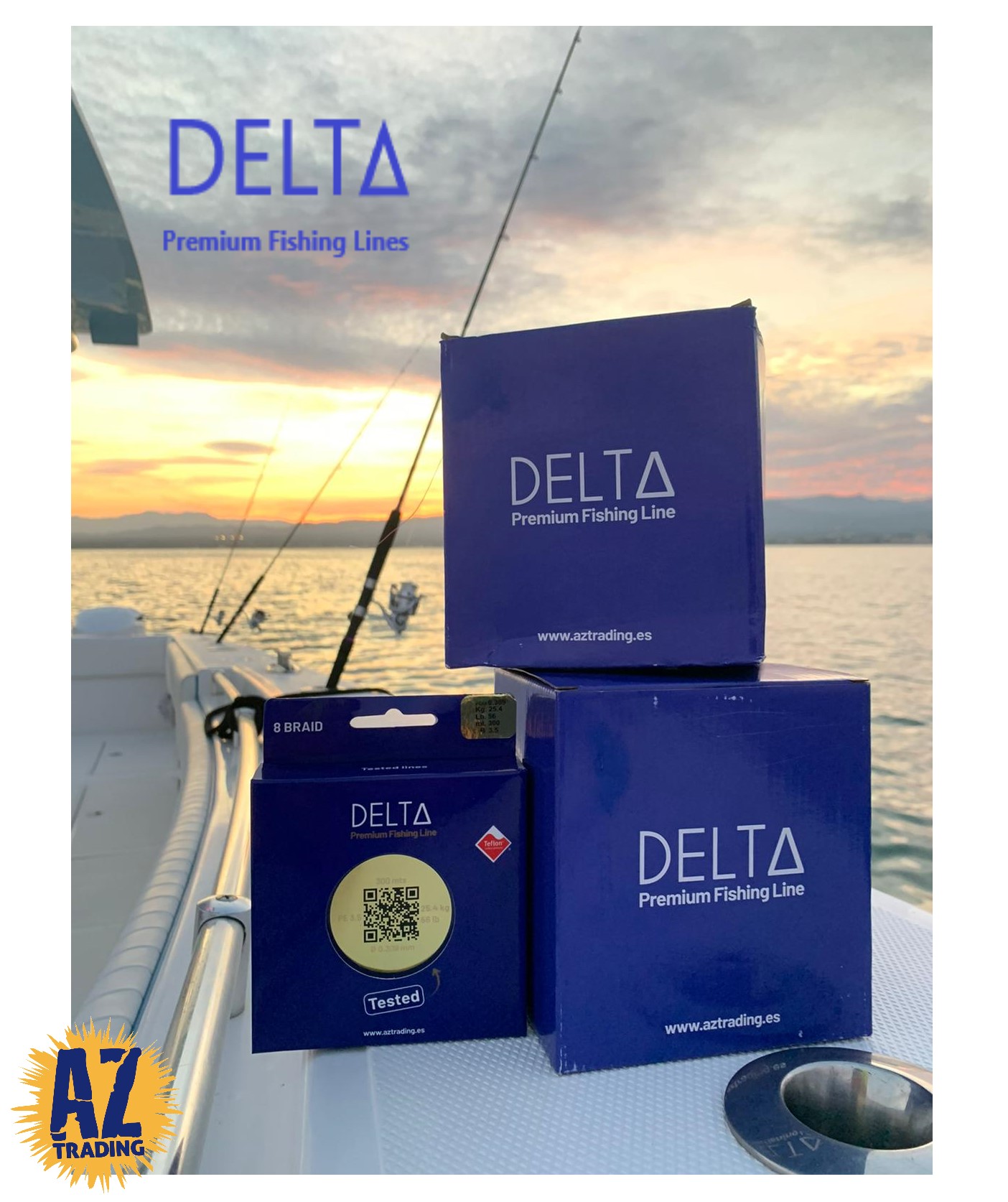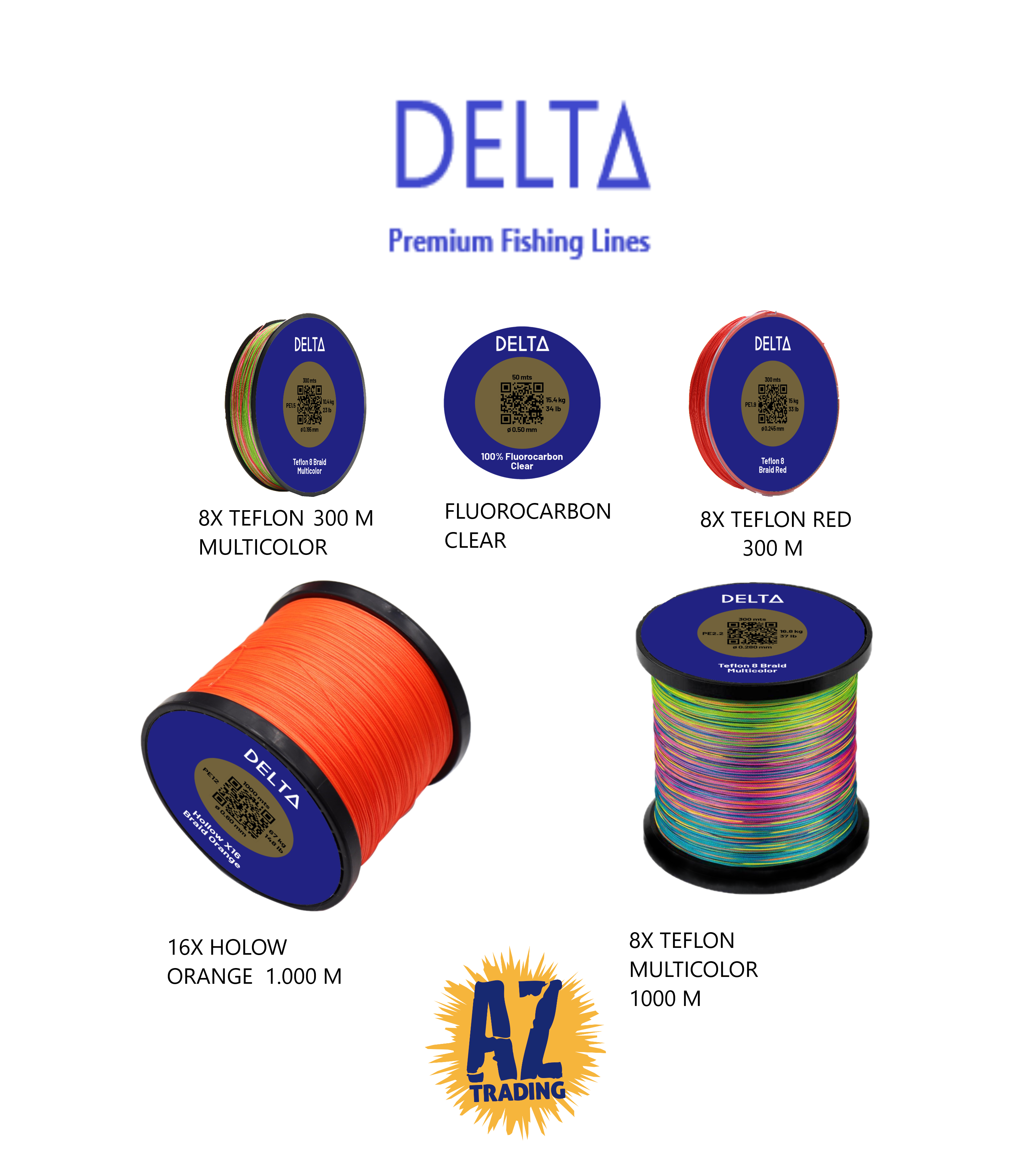
BRAIDED YARNS
In recent years, braids have been evolving in design and performance by leaps and bounds, and today there are many types of braids on the market, depending on brand, number of strands, etc.
But we must be very careful when buying a braided yarn, because the thicknesses and resistances very rarely coincide with what is described on the product, and we are surprised at home when we are about to replace the yarn on our spool and we see that we have too much or that the spool is very empty.
The main characteristic of this type of yarn, compared to traditional monofilaments, is its high strength, which is especially noticeable in thinner and stronger yarns than conventional yarns.
If we add its zero elasticity and memory, this makes it one of the best threads for fishing.
Why use braiding? Characteristics and qualities
- Resistance: This is the most important characteristic. Braided fishing line is the most resistant fishing line that exists. If we are looking for big specimens, or we want resistance using very fine thicknesses, we will have to use this type of thread almost obligatorily.

Spinning braided yarn:
For light or heavy spinning, it is almost mandatory to use braided line for several reasons:
- Higher braid strength compared to monofilament.
- Improved bites due to less elasticity.
- Greater distance in the cast.
Braided jigging line:
As for spinning, it is almost mandatory to use braided line. In addition, in this fishing technique, using vertically leaded lures, it is very important to use a braided line with a Teflon treatment, since the Teflon treatment will make it have less resistance to friction with the water. Also, this Teflon treatment will prevent the braided line from soaking or absorbing water, which will help the lure go down more efficiently and quickly.
We will notice this more with the use of lures of less grams, which is today's trend, the use of smaller lures.
As in spinning, having minimal elasticity makes it easier and more effective to hook the fish.
Number of strands.
The most common is to find braids with 8 strands or 16 strands (better known as Holow), being the 8 strands used for most types of fishing, although there are also 12 strands.
The 16-strand braids, which are more resistant, are used for extreme trolling or spinning (popping), in the capture of large predators such as bluefin tuna, or other large species on fishing trips in the tropics.
When using braided lines in trolling equipment, it is always advisable to use a long bass or shockleader of much greater thickness and resistance, to give the line some elasticity and avoid a break in the bite of a big fish that is usually very hard, since as we have said before, braided lines do not have elasticity.
In Aztrading, we have our project to measure the thickness and test the resistance of the threads and other fishing accessories such as hooks, swivels, staples, etc..,
For this purpose, and by investing in special and approved machinery, we test our yarns in thickness and resistance, as well as other products, to verify that what we sell corresponds to what we advertise in our catalogs and website.
In our website WWW.AZTRADING.ES, we have all kinds of materials for the enjoyment of fishing. Lures, lines, rods, clothes, salabres etc, you can view videos with test, video tutorials with uses of materials, and many more sections that we invite you to discover.
You can also send us an inquiry if you need help Aztrading@Aztrading.es
Good bow and good fishing!
Remember that it is our obligation to fish responsibly.
Don't leave rubbish in the fishing boat or throw it in the water.
